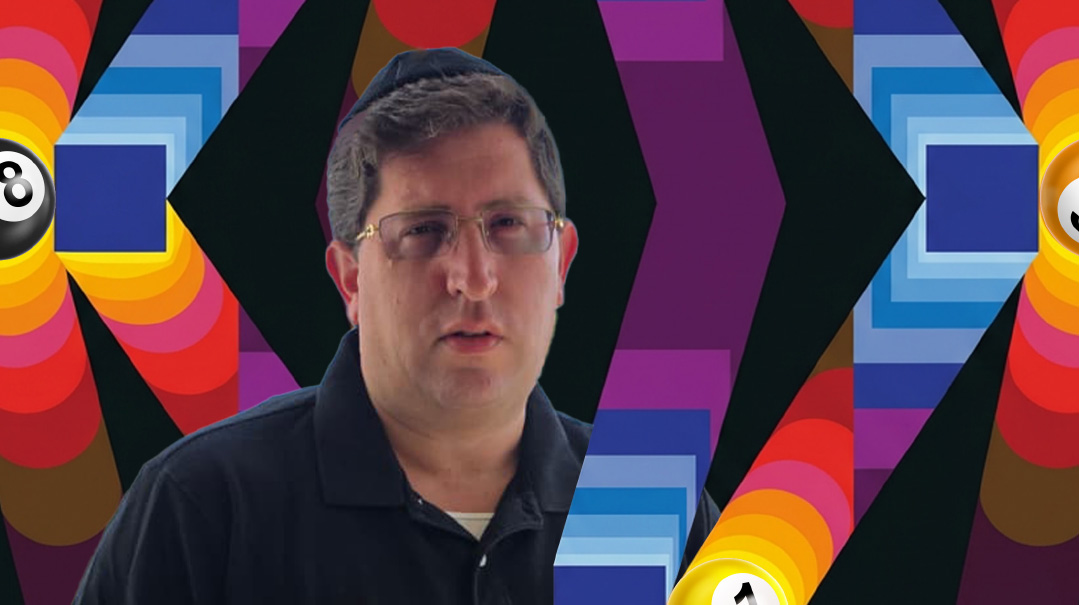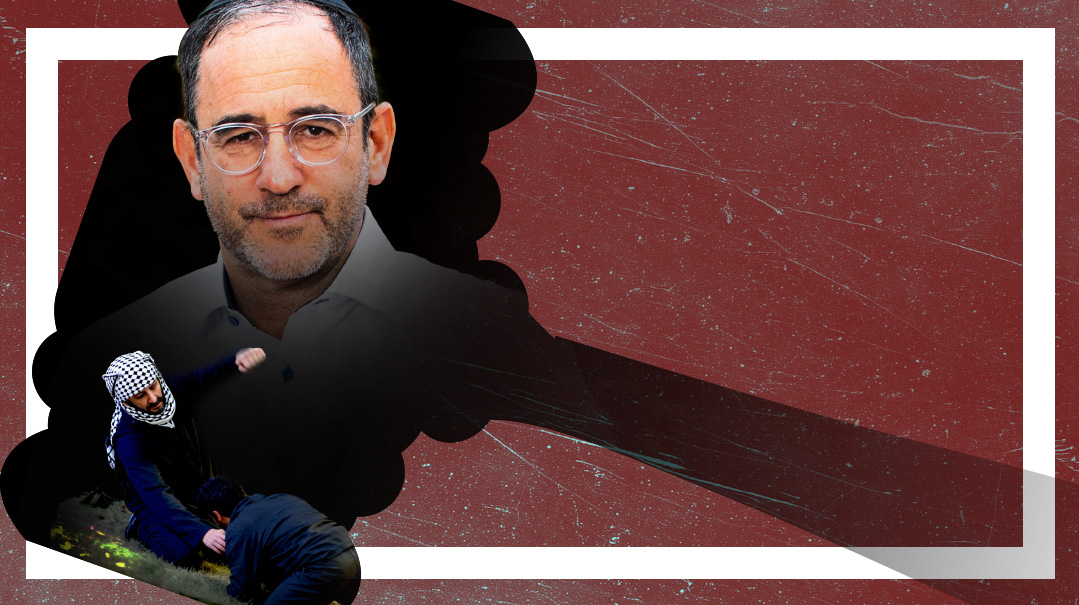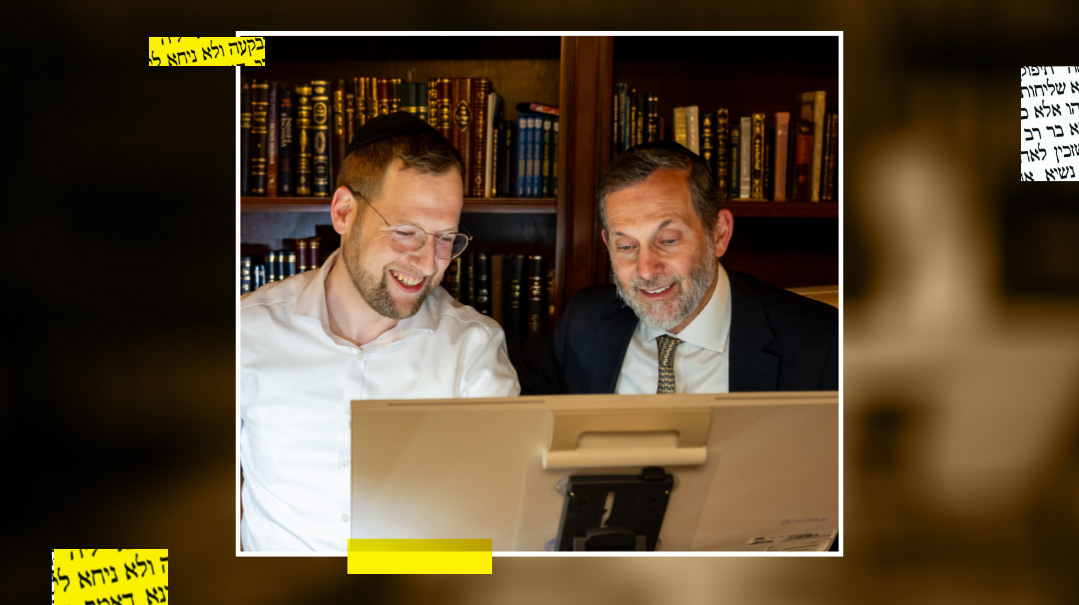Heavy Hearts
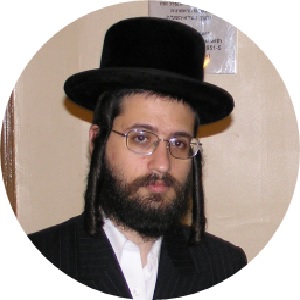
With 160 children extricated from Lev Tahor, will this grisly chapter finally beat its last?
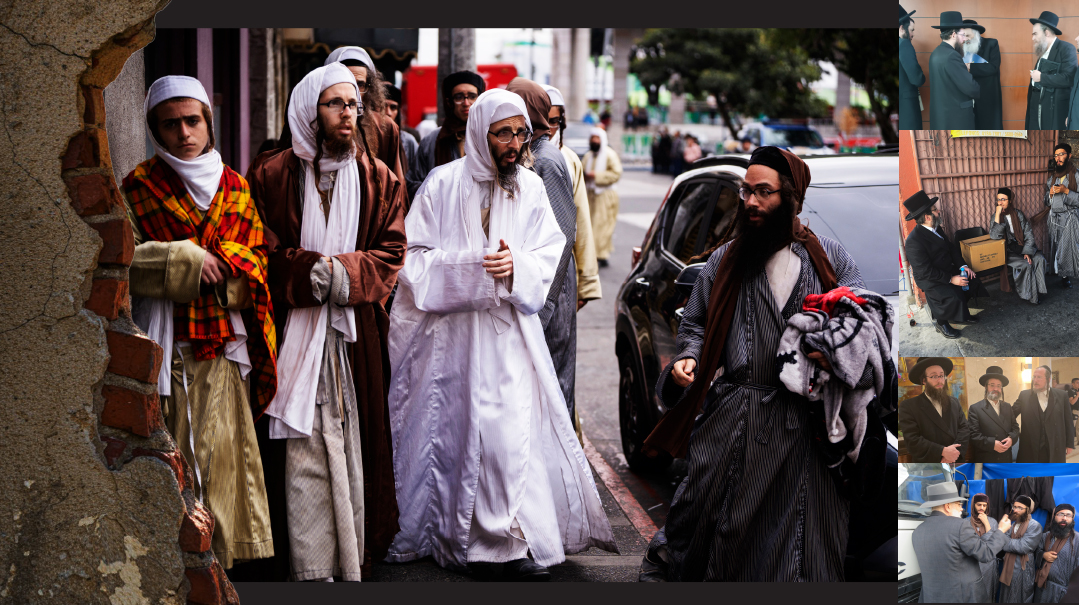
When hundreds of policemen surrounded the closed encampment of Lev Tahor in Santa Rosa and rescued some 160 minors, it wasn’t long before a cadre of askanim converged on Guatemala City to help facilitate their reunification with parents who’d left the cult or court-approved family members. Although I was attacked and chased through the compound, here’s hoping this grisly chapter might finally beat its last
For many years the fringe Lev Tahor sect — faced with multiple allegations of severe child abuse, abduction, and human trafficking — was able to outrun law enforcement authorities, fleeing from Canadian compounds in Quebec and Ontario in 2014 after child protection services threatened to remove the group’s children, then taking refuge in Mexico, Trinidad and Tobago, and finally in Oratorio, Santa Rosa, about 50 miles southeast of Guatemala City.
While officials all over the world have fielded complaints about Lev Tahor and several of its leaders are serving prison sentences in the US, the cat-and-mouse game avoiding the seizure of the sect’s children came to an end the last week of December, when — after months of preparation and information gathering, plus the gruesome testimonies of several children and teens who had managed to escape — hundreds of policemen surrounded the closed compound in Santa Rosa and rescued some 160 minors. The irony is that while those young people are minors according to international law, several dozen of them are actually parents of young children, forcibly married off by the sect’s leaders at the ages of 12 or 13. They, together with their babies, were taken by the welfare authorities to five structures over an hour’s drive from the Lev Tahor compound, while the adult members of the group — considered a cult even by the most insular elements of the chareidi and chassidic world — moved into a protest tent camp on the streets outside the children’s shelter.
The extreme anti-Zionist Lev Tahor sect, the leaders of whom are accusing the Guatemalan authorities of religious persecution, is known for imposing a tyrannical regime on its followers, including child marriage, severe and shocking punishments for the most minor “transgressions,” and “purification rituals” that are forms of torture.
In 2022, members of the sect were arrested in a police operation in the southern Mexican state of Chiapas, but they were later freed for lack of evidence. This time, the battle to save the children — heavily covered over the past month in the international media — is being waged primarily within the walls of family court, assisted by a group of askanim from around the world who’ve spent years trying to extricate them from the clutches of the cult and have now converged in Guatemala City to expedite the process of securing their release and mainstreaming them into normative chareidi and chassidic kehillos.
Some of those activists are prominent rabbanim; others are relatives of Lev Tahor members. And the atmosphere — the furor and the sense of urgency — was palpable as soon as I reached the Chabad House in Guatemala City to daven Shacharis. Some of them have been trying for years to get their family members to leave the sect, and others have court-approved guardianship of the children.
In the large backyard tent that’s been serving as the shul since Covid, I met with Rabbi Yehoshua Heschel (Shea) Blum, of the Kashau community in Brooklyn, who’s been involved in this matter for years. His sister is married to Moshe Yosef Rosner, one of the cult leaders, and Rabbi Blum has flown to Guatemala multiple times since the raid, spending the week there and returning home for Shabbos.
Rabbi Blum solicited his childhood friend, philanthropist Reb Avraham Greenhut, who has joined him in Guatemala and is funding both legal proceedings for those seeking assistance and tickets for ex-members who have left the cult and wish to return home. He also provides a generous acclimation package for those settling in new locations.
At another table that morning is Rabbi Shea Hecht, a Chabad writer, radio broadcaster, chairman of the National Committee for the Furtherance of Jewish Education — and famed cult-buster.
Rabbi Hecht is in deep in conversation with Rav Chaim Yosef Dovid Weiss of Antwerp. Rav Weiss, who has been extensively involved in international Hatzalah projects and gained international prominence in 2009 as a liaison for the “bochurim imprisoned in Japan,” was originally an advocate for reuniting the Lev Tahor children with their parents, until he heard first-hand testimonies of the severe abuse in the compound. Today he is at the forefront of refuting the group’s cover narrative as a fight against Zionism that the members weave in an effort to raise money in Satmar and similarly aligned communities (over the years, Lev Tahor has raised over $6 million from these communities).
In a corner I find Yaakov Flitchkin, an American chassidic activist who speaks ten languages and somehow winds up everywhere, from his meetings with Trump’s family to engagements with senior leaders in dozens of countries around the world. Flitchkin has contributed his expansive connections to this effort, even though he suffered physical beatings by cult members who were furious at the operation to rescue the children, and has now brought food, clothing, and other amenities for the children and teenagers in the detention facility.
“This time, there’s a ninety-nine percent chance that we finish them off,” he says with satisfaction.
“What happened until now?” I ask.
“The authorities didn’t have enough concrete testimony. And believe it or not, they didn’t understand the difference between these people and the rest of the Jewish nation. I once asked the previous president, who was a real oheiv Yisrael, why he didn’t take action against them. He told me, ‘I thought if I would take action against them, I’d be working against the Jewish people.’ It took them time to realize the huge gap between us.”
Guatemala Attorney General Maria Consuelo Porras has been working closely with the askanim, helping to navigate the legal complexities in order to sort out a tragic situation with the best possible outcomes.
Today, outside the compounds where the children, teenagers, and young mothers are being held, the police are taking no chances, having reinforced the site after the cult leaders tried to break in to rescue the children.
C
habad of Guatemala shaliach Rabbi Shalom Pelman and his wife Rebbetzin Yael are busy from morning to night with this new crowd. Their regular visitors — Israeli tourists on their travels through Central America — have been replaced with guests who look like they’ve come straight out of Williamsburg. The Pelmans host everyone with grace and kindness, and with lots of patience. Many of their guests are devastated family members who’ve come to save their relatives from the clutches of the cult.
I meet an elderly couple who’ve come from Detroit. Their daughter and son-in-law and grandchildren somehow got drawn into Lev Tahor. The children are now in the state’s welfare facilities and the parents are in the protest tent camp on the street.
“We knew nothing about this beforehand,” they say. “On Erev Rosh Hashanah a few years ago, my daughter called to wish us a good year. ‘It’s not Yom Tov by you yet?’ we asked her in surprise. They were living in Eretz Yisrael, seven hours ahead of us. ‘We’re actually in Guatemala,’ she answered. ‘We’re trying out a new place.’ We don’t understand how they got caught up with the Lev Tahor people. Our daughter was so normal, a graduate of Gateshead Seminary, and our son-in-law learned in Brisk for ten years.”
This feeling is shared by many parents. The sect put on an outward show of living a life of asceticism and holiness, cut off from the mundanities of this world, while according to the allegations, it actually served as a front for the perpetration of the worst kinds of sins.
There are numerous members of the Rosner family here as well. Moshe Yosef Rosner’s two non-Lev Tahor brothers have maintained contact with the sect for years, even managing to get inside the compound more than a few times, usually during family simchahs, and to track a bit of what was going on there. Now they are here again, this time with their elderly mother. Last week, the police arrested Moshe Yosef together with Aharon Teller, Lev Tahor’s rosh yeshivah, on allegations of serious criminal activity.
This isn’t the first arrest of those in the Teller-Rosner circle. In 2018, Sara Feige Teller, daughter of Lev Tahor founder Shlomo Helbrans and sister of Nachman Helbrans, the sect’s leader, was at the center of a kidnapping that landed her brother, her mechutan Meyer Rosner, and brothers Yaakov, Shmiel, and Yoel Weingarten in a US prison, currently serving out 12-year sentences.
Mrs. Teller, upon seeing her brother’s newest takanos when he took over the leadership after their father drowned in a river in Mexico in 2017, was afraid for the lives of her children, after her brother talked of preparing the children for suicide should the “Zionists” come into the compound.
She also objected to the forced marriage between her 13-year-old daughter and the 19-year-old son of Meyer Rosner — and so she did the unthinkable and escaped from the Guatemalan compound. With the help of the local Jewish community, she made her way back to New York, where one Shabbos, Helbrans, Rosner, and the three Weingarten brothers kidnapped her children and took them across the border to Mexico, where they were eventually apprehended and the children recovered.
“Our tactic was always to maintain contact with the second generation,” one of the Rosner brothers explains. “There are dozens of grandchildren and great-grandchildren of the Rosner family ensnared in the cult. And this time it’s very serious. Guatemala will do everything not to give the children back to them.
“But you know, Moshe Yosef never showed signs of regret. He is still sure of his derech, and the more he’s persecuted, the more he becomes an isolated minority. He believes Mashiach will ultimately come only to him.”
Another recent arrest was Eliezer Rompler, who fled Guatemala after the authorities raided the cult’s compound. He was arrested while trying to enter El Salvador, as there was an international arrest warrant out on him, issued at the request of Israel who is interested in his extradition.
An indictment was filed against him in Israel in 2020 detailing severe child abuse during the time he was head of the Lev Tahor school in Canada, but he managed to escape the country using a fake passport shortly before his hearing.
L
ev Tahor was formed by Israeli leader Shlomo Helbrans (born Erez Shlomo Elbarnes), a charismatic Israeli baal teshuvah who moved to the US in the early 1990s, where he served time in prison for kidnapping a 13-year-old Israeli boy who was sent to him for bar mitzvah lessons. He was released after two years, founded a yeshivah in Monsey according to his extreme brand of Judaism, and was deported back to Israel in 2000. He later settled in Canada, where he was granted refugee status, claiming his life was being threatened in Israel.
Helbrans and his followers settled in Sainte-Agathe-des-Monts outside Montreal, but amid allegations of child abuse and under threat of the children being removed and placed with Jewish foster families, the group fled, first to Ontario and then to Guatemala. Some made their way to Mexico, where Shlomo Helbrans met his death in 2017, when he drowned in a river that he was apparently using as a mikveh.
While internal memos revealed the mind-control the senior Helbrans wielded among his followers — the obligation to negate one’s mind and subjugate soul, spirit, and will to the leader for all future generations; to be ready at all hours of the day to do the will of the leader; and to relinquish all physical needs, including eating and sleeping, until the desires of the leader are fulfilled — strictures became even more radical and aggressive once his son Nachman Helbrans took over.
Punishments for young children would include being kept in a storage box for months at at a time with no change of clothing or bathroom facilities, severe beatings and regular “malkos” ceremonies, in which those guilty of infractions would be stripped and whipped with 39 lashes in a public ceremony. (Since 39 lashes at once can be fatal, the ceremony would be divided up.)
Although Nachman Helbrans is sitting in a US penitentiary, he still manages the sect from prison by phone.
Eventually, life in the compound became unbearable, as personal freedoms were completely negated and entire families became possessions of the cult management.
“It’s not simple at all,” Rabbi Hecht tells me. “These poor children, and some of their parents, were born into this dreadful reality. They’ve been brainwashed to believe that they are the only true Chosen People and that Mashiach will come only to them.”
While the government operation left the cult members helpless this time, they’re still fighting back, trying every possible manipulation and scheme to get the children back. Because they’ve been sending women with fake identities to the custody hearings, claiming to be relatives of the children, the court has begun to demand DNA tests as proof of family relations.
Alongside the primary arena of the court, where a fight is being waged for each child, the askanim are taking advantage of the media as well. In the lobby of the hotel where they were staying, a press conference was in progress, where breakaway survivors were answering journalists’ questions. Secretary of State Marco Rubio — on a week-long tour of Central America — was staying upstairs in this same hotel, the lobby filled with his security detail. They whisper to me that the Lev Tahor issue will be raised during conversations between Rubio and his Guatemalan counterparts, with most talks focusing on new migration models and border security.
Because some of the children are American citizens, the United States also responded to the raid on the compound. A statement from the US Embassy in Guatemala read: “Following recent events involving the Lev Tahor group, the US Embassy fully supports the Guatemalan government’s investigation into allegations of child abuse, and trusts in the collaborative work being carried out by Guatemalan authorities and the international community to protect their integrity and ensure justice. The protection of US citizens is our top priority.”
How did Lev Tahor stay under the radar until now? “They are very good at concealing their actions,” says Rabbi Shea Blum. “As much as we knew, we didn’t know enough. Now, the testimonies of those who came out of there, mostly minors who were compelled to ask for protection from the courts, have horrified the local authorities with their stories. One of the victims still bore the scars several years later of being beaten all over his body.”
While most of the early funding has dried up, Rabbi Blum explains that they’ve survived because they haven’t needed much. “They starved their people. They took all the members’ funds with the claims that no one was allowed to have personal assets,” he says. “They would collect money from all kinds of wealthy people in New York, claiming that the Zionists were about to take the children and lead them to shmad. It took time to realize that there are no Zionists involved here. What there is, is a cult filled with evil and impurity, and I put an emphasis on the tumah aspect, as they carried out the worst actions you can conjure up, ostensibly in the name of Torah.”
IN
the afternoon, I go to visit what’s left of the cult in the protest tent. It turns out I came at a pivotal moment. There was a visit in progress by one of their greatest nemeses, Mr. Ben Nash, a multimillionaire from Miami, who in recent years has dedicated effort and resources to fight the sect. The Guatemalans are taking no chances. Nash is considered to be at risk here, and so they transport him like a prime minister, with a convoy of armed guards that surround him every minute he is in the city.
He approaches the cult members, tries to have a conversation, but they continue to blaspheme him, as the security guards huddle closely around him for fear that someone will try to harm him. But Nash doesn’t give in, and promises that he’ll continue fighting them with everything he has.
They really have it in for him though, because he had deceived them several years ago, when, using his money, he was able to befriend them and be invited into their homes. He was the one of the players behind the operation to extricate Sarah Teller and her children, and then to locate their abductors and turn them in to the FBI.
I asked Nash how the situation so deteriorated, under the guise of religious piety.
“I’ll be very blunt,” Nash says. “Some of your community is to blame. There are those in your community that supported them — and continue to do so until today — despite everything that we all know about them now.”
As long as I’m here, I decide to sit down and have a conversation with one of the members. Dov Ber Malka belongs to one of the dominant families in the cult. His father, Yisrael, has been there from the beginning, and some of his children, those who have not yet escaped, also hold leadership positions. One son, Chaim Tzvi, is one of the most powerful figures in Lev Tahor, and in 2022, cousins Mordechai and Matisyahu Malka were found guilty of charges for their role in the abduction of the Teller children in 2018.
Once Dov Ber Malka clarifies that I’m not part of the Blum-Greenhut alliance, he agrees to talk. The truth is, members are generally happy to talk to anyone. They’ve always tried to explain themselves to the outside, and to present themselves and persecuted victims, primarily of the Zionists.
We took two plastic chairs from the tent and sat down to talk. Maybe, I thought to myself naively, I’d even be able to persuade him to escape with me in my car.
Are all the dreadful things being said about you true?
“Like what?”
“That you marry off boys at age 13 and girls at age 12.”
“Yes. After all, our holy Avos also married at that age.”
But then they separate them for months on end as a punishment. What about the other terrible punishments I’ve heard about?
“What’s the problem?” Malka says. “Open the seforim of the great mekubal Rav Moshe Cordovero, and you’ll see a list of tikkunim and tortures that a person should take upon himself for every single aveirah that he does.”
Have you heard of even one tzaddik in the past 200 years, from the Baal Shem Tov to this day, who ordered simple people to conduct themselves according to any one of these tikkunim? And who are you to forcibly impose them on other people?
“So why did the Ramak write this sefer? And who did Rav Aharon Roth write his Sefer Hatikkunim for? If we don’t fix it in this world, we’ll get heavy punishments in Olam Haba.”
Why are you dressed this way?
“Because this is the way our elter zeides and elter bubbes dressed. A very long time ago, they dressed this way. True, we don’t have pictures, but we just know it’s true. It’s clear that this is how it was. The holy Avos and Imahos also dressed this way. We’re trying to be as close as possible to what once was.”
What about all the punishments and brutality we’ve been hearing about?
“Nothing to them. Who told you? Tell me names and I’ll explain everything.”
And the fact that you don’t let people leave the cult?
“Totally not true. Yesterday someone left with his children. We have no problem with that.”
I was actually familiar with that particular story, how much evil and cruelty was involved and how the askanim had to pull strings to extradite them.
Every so often he showed me on his smartphone all kinds of clips that ostensibly proved his words.
You’re allowed to have these devices?
“Now we’re allowed to because there is no choice. We are facing a war of destruction. But we have a filter.”
From the stories we know, I’ve long learned that for the members of Lev Tahor, everything is permitted for the sake of the existence and survival of the cult. Even mass Shabbos desecration. Having a smartphone is a relatively minor sin in comparison.
A
fter half an hour of this verbal ping-pong, I stand up, look Reb Dov Ber in the eye, and tell him, “Listen to me, Reb Yid. There’s no point in me talking to you — we’re speaking a different language. You were born into a certain distorted reality, and there’s one thing you should know: There is a beautiful big Jewish world out there. I hope that you will one day merit to discover it. Based on your very precarious situation right now, it looks like that day is coming closer. It may be only then that you’ll understand what I’m going to tell you now: When that day comes, you will weep for every day that you were in this Gehinnom.”
Dov Ber looks at me without a word. I stand up to leave. As I survey the scene, here were the men in one tent, the women in another. They’re living there in subhuman conditions. Yet even those who, deep in their hearts, would consider leaving, they won’t, because it’s not even an option for them — they’re constantly being supervised by the leaders. These leaders, who are ostensibly sleeping in the streets with them, are also are booked into a nearby hotel, where, between meetings for survival, they grab naps on comfortable, freshly made beds. They are surrounded by many local non-Jews, some of whom support them. It’s hard for a local gentile to understand the difference between the various groups, so they automatically galvanize to support the persecuted Jews.
And then, any kind of goodwill suddenly changes. It began with one of them who came over and demanded that I leave. I refused. “Isn’t this a public street?”
As he was warning me, more members of the cult began to gather. They surrounded me and began to shout: “Get away from here, go away!” And then the pushing started. And the kicking. I began to move off, but that was no longer enough for them. They continued running after me, and pushing me violently. I suddenly felt my hat disappear, and a minute later, I had no yarmulke either. One pair of hands tugged off my glasses while another held me forcibly, trying to empty my pockets of my phone and my personal effects.
I fled, and they followed me. I tried to escape into a nearby store, but they warned the proprietor that I was a thief. I kept trying to run. I could already see the worst becoming reality. I fled with whatever strength I could muster, and only turned around when I was sure that no one was on my tail anymore.
I could barely breathe. I stood there, sans hat or yarmulke — and without my glasses. There was no way I could drive my rented car without glasses. Meanwhile, I noticed a police car passing. I didn’t think twice. I opened the door and jumped inside. I called someone who speaks Spanish and asked him to translate what I was saying for the policeman. I asked them to return to the scene and demand my belongings.
They drove right over there. The police went into the tent and a few moments later emerged with my things — my hat and my glasses. They couldn’t find the yarmulke. The people claimed that it had gotten lost in the shuffle or on the run. The police urged me to leave the scene right away and I complied. (For the next few days, I sufficed with a woolen yarmulke I found in the Chabad house.) Just before I left with my car, Dov Ber Malka hurried over to apologize.
I
didn’t dare go back to that area, but the next day, I did go to the court. I didn’t want to give up on the moment when the Goldman family’s children would be returned to their parents. The father, Yoeli, had escaped from the cult half a year ago, but Mrs. Goldman was still there, living in the street until a few days ago. Somehow, she managed to get ahold of a phone, from which she called her husband to come and rescue her. The askanim were there very quickly to take her to a safe place, and today, they would hopefully be granted custody of their toddler and baby.
We’re in the courtroom’s waiting area, while outside, Lev Tahor people are demonstrating, which means they’re cursing and blaspheming. But it doesn’t seem to be helping them much. Inside, the wheels of justice are turning, and quickly. Every child whose parents remain in Lev Tahor will ultimately be handed over to their chareidi family members unconnected to the cult, or in cases of a lack of cooperation, to chareidi foster families in the United States or around the world. The askanim have reached clear agreements with government representatives that the children would not be placed in the custody of families who are not suitable for their lifestyle.
The courthouse is bustling with activity. This is where Blum and Greenhut are investing most of their efforts. On the other hand, the Lev Tahor people are also working hard, busy in the corridors with their lawyers.
We sit and talk, and Shea Blum uses the time to tell us a few hair-raising stories of the unbelievable brutality allegedly exercised by the cult members. Meanwhile, we see the social workers bringing the children, which is a good sign. Our hearts flutter with emotion. From on top of the staircase, Greenhut makes us a V sign — the judge has approved the children’s return. Adults who leave the cult and regain custody of their children are legally obligated to leave Guatemala within 30 days, and per the terms of the custody ruling, the askanim have already organized living arrangements and a support system to assist the Goldmans once they leave the country.
Outside, the demonstrators are still chanting and cursing the askanim, and screaming in protest. This endlessly complex struggle is not over. There’s still a long way to go. But from the way it looks, the children, at least, will finally see some light at the end of their heart of darkness.
—Rachel Ginsberg contributed to this report.
(Originally featured in Mishpacha, Issue 1049)
Oops! We could not locate your form.


